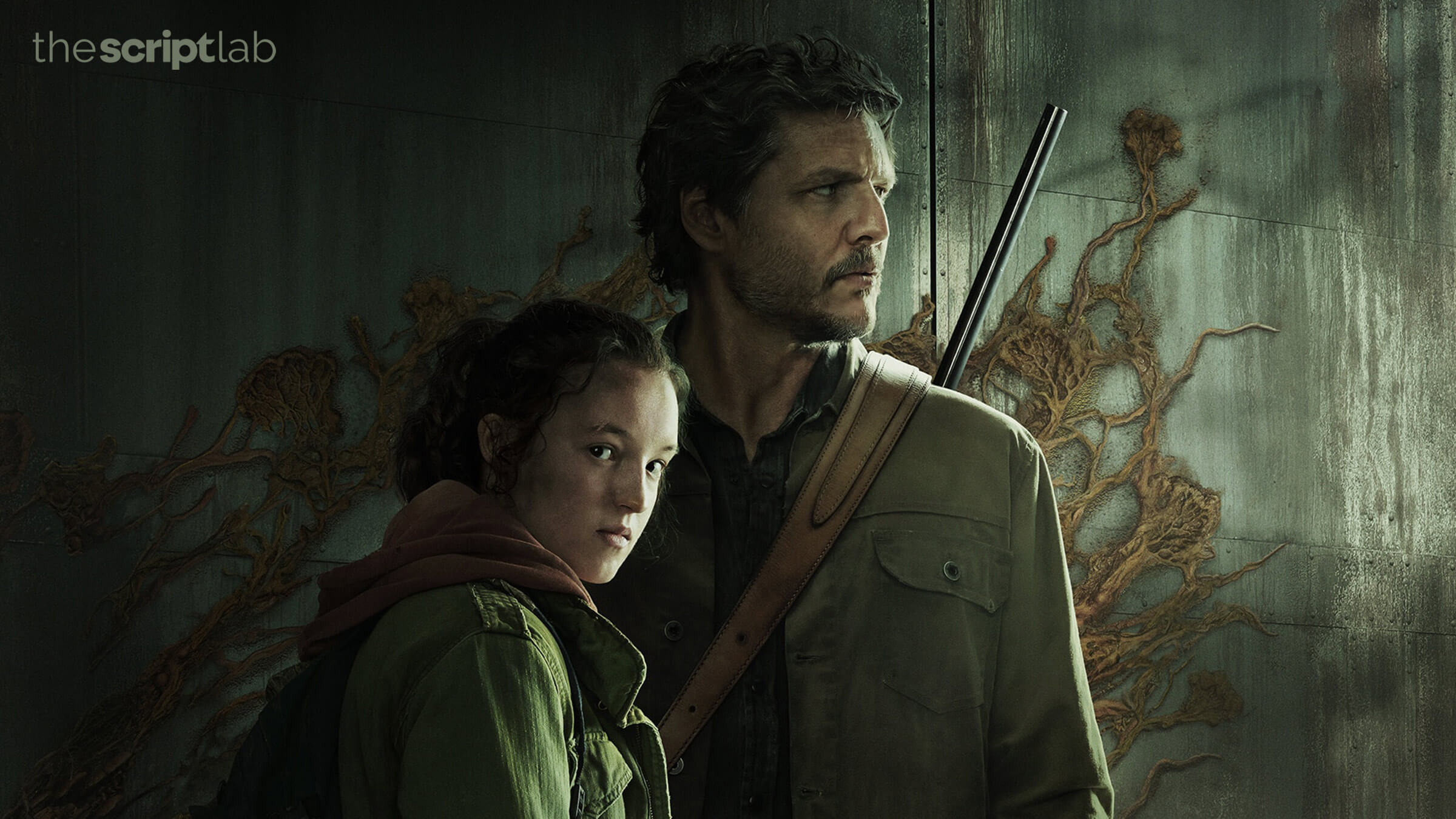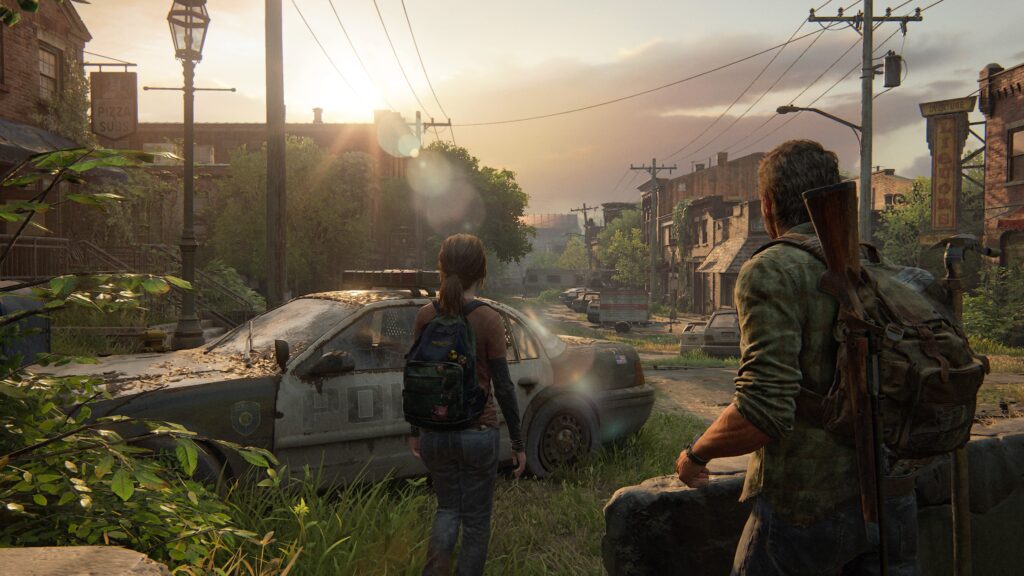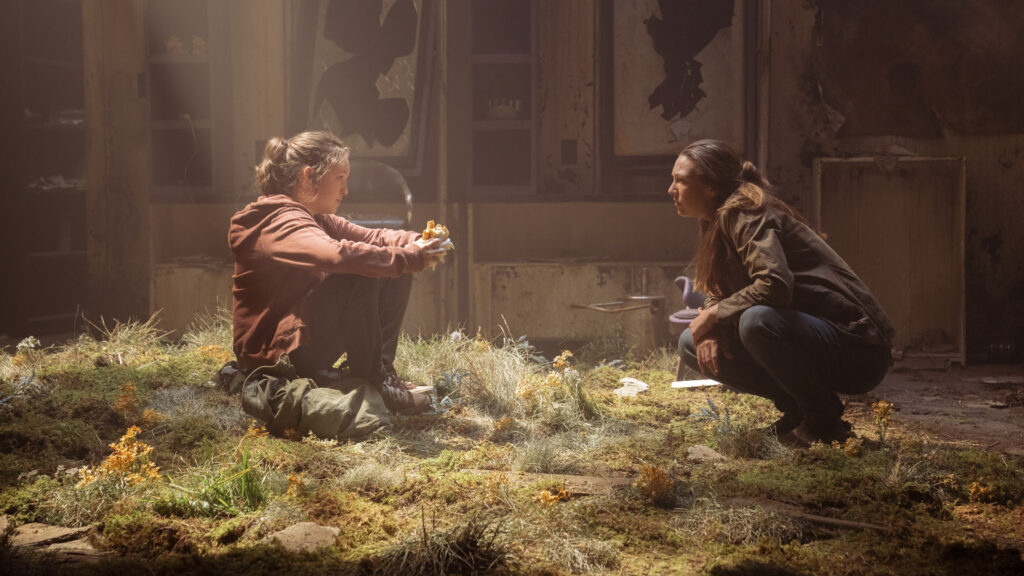By Ken Miyamoto from ScreenCraft · February 15, 2023

In 2013, Sony’s third-person narrative and highly cinematic game The Last of Us debuted, telling the story of smuggler Joel navigating through a post-apocalyptic landscape decades after civilization has fallen to zombie-like humans that have succumbed to the effects of a mutated fungus. He’s tasked with guiding an apparently immune teen girl across the country to get her to someone who can create a cure. Standing in their way are endless obstacles, including an oppressive totalitarian government present within larger cities, rebellion factions that trust nobody, desperate survivors, and, of course, the infected.
The game was an instant hit, becoming one of the bestselling video games of all time. It also won multiple Game of the Year awards and has since been known as one of the greatest video games ever made.
Because of its cinematic style, a Hollywood adaptation was inevitable. However, video game adaptations didn’t have the best reputation. The struggles to adapt video games into movies were two-fold:
All of that has changed with the arrival of HBO’s The Last of Us series. Here we offer ten elements of the series that make it great in the eyes of both fans of the original source material and newcomers who have never played the game.
SPOILER ALERT: Beware of spoilers if you haven’t seen the latest episodes of The Last of Us.
The issue with previous video game adaptations is that they were always adapted into feature films. Movies only give an average of 90-120 minutes worth of stories. However, video games take multiple hours for gamers to maneuver through the whole story of the game. 2013’s The Last of Us took the average loyal gamer 14 hours to complete. You can’t satisfy the source material’s greatest fan base by cutting that experience down into a condensed two-hour block.
As most know, we’re in a new Golden Age of television and episodic storytelling. Hollywood finally discovered that television platforms — and streaming platforms that work as the next-generation TV networks — offered opportunities to create 10-hour (give or take) movies. This has compelled many movie directors and stars to move to TV and streaming platforms to explore their cinematic characters and stories further.
Making The Last of Us an HBO series was a brilliant move that allowed the writers to flesh out the characters and brand the story into many directions that could not have been offered in a two-hour feature time constraint.
When adapting a video game, you need to ensure that you offer an enticing carry-over experience for the fan base that made the source material such a resounding success in the first place.
Series creators Chernobyl writer Craig Mazin and The Last of Us creator Neil Druckmann teamed up to expand the source material in a multi-episode (and now multi-season) cinematic experience. Since the original game was renowned for its visual aesthetics that resembled a feature-length film, Mazin and Druckmann had an easier opportunity to honor the source material with callback visuals in the form of shots, camera angles, special effects, and cinematic moments.
Many of the shots from the series match iconic scenes from the video game. Honoring the source material like this is critical to retaining support from the original fanbase. And The Last of Us goes the distance by also honoring the characters, storylines, and world of the game as well.
If you honor the source material, you won’t lose the fans that made the game a success in the first place.
Read More: 5 Things Video Games Can Teach You About Screenwriting

‘The Last of Us’ video game
The added thrilling dynamic of this series for fans of the game is watching Mazin and Druckmann expand on the world, story, and cast of characters from the game. Gamers get special editions of the characters they interacted with within the game.
Gamers learn more about Joel’s daughter, Sarah, before her tragic exit in the opening pilot episode.
We spend a bit more time with Tess and see that she is now a romantic interest for Joel.
Fans are offered an expansion of Bill’s storyline with a dedicated episode that showcases not just his whole backstory, but also a heartfelt look into the life he led — and the companion he met. In the game, Frank was nothing more than a hanging corpse. In the series, he’s a fully fleshed-out character that significantly impacted Bill’s storyline.
With these characters and many more throughout the series, Mazin and Druckmann expand the source material of The Last of Us brilliantly by delving more into key — but underutilized — supporting players within the gameplay of the original game.

‘The Last of Us’
Anyone that has watched the series thus far knows the third episode. The love story of Bill and Frank is HBO’s equivalent to Pixar’s opening sequence in UP, as we watch Carl and Ellie’s relationship blossom from the beginning, middle, and onto the heartbreaking end.
That is what Mazin and Druckmann gave us in the third episode of The Last of Us.
Bill and Frank are unlikely relationship blossoms into something beautiful and cathartic — but leads to inevitable tragedy. And the writing goes beyond that to pull at our heartstrings even more.
Read More: Pixar Movies: The Digital Disney
The writers broke our hearts in Episode Three. And then they broke them again in Episode Five after introducing us to Henry and Sam. It’s difficult to remember a series so unafraid to sacrifice characters. Most series hold onto characters for far too long (The Walking Dead, Lost, etc.). However, The Last of Us continues to pull at our heartstrings by introducing characters that leave a cathartic imprint on our hearts, only to sacrifice them for the arcs of the main characters.
It’s a testament to the world-building of Mazin and Druckmann. Everything is there to show that this post-apocalyptic world they’ve created is unforgiving. And while Joel and Ellie may live another day, the same cannot be said for those they come across on their journey.
Read More: Screenwriting, Video Games, and Storytelling with Gary Whitta
Just take a look at this behind-the-scenes featurette from HBO Max that explores how Mazin and Druckman pulled on our heartstrings in The Last of Us.
Television and streaming platforms are the mediums of the writer. Typically with series development, we get an array of writers within the writer’s room. With The Last of Us, we have just two credited writers — series creators Mazin and Druckmann. And, it’s outstanding that they retained the game’s creator to partner with Mazin.
Usually, the series creators act as overseers in the Executive Producer role. Not with The Last of Us. Mazin and Druckmann and the sole architects of the story. This dynamic offers a tighter vision for the whole series.
Mazin broke it down best to ComicBook.com when he said:
[Druckmann], as the creator of the game, and me, as a fan of the game, we were caretakers on behalf of all the fans but also on behalf of all the people who haven’t played the game who need a television experience that is holistic and connected to itself and doesn’t feel like you need to play a game to understand.
Let’s face it. Hollywood has done zombies to death (pun intended). We’ve seen endless zombie movies. We’ve had over ten seasons of The Walking Dead (and many spin-offs). Thankfully, the original game, as well as the series adaptation, manage to offer up new and fresh ideas to accompany the zombie-apocalypse genre.
While the series falls under the banner of the zombie apocalypse genre, it offers just enough fresh nuance to stand apart from its predecessors.

‘The Last of Us’
The cast is outstanding. Between the characters’ videogame portrayals and the series’ casting, the creators wisely offered some representational casting decisions — as well as character decisions — that led to a more diverse cast of characters representing the diverse audience base.
Read More: Review: Warcraft Proves Why Video Game Adaptations Rarely Work
As mentioned in number five, The Last of Us is never afraid to break our hearts. The series does that by introducing characters in superb and intriguing fashion, only to kill them in a dramatic and heartwrenching fashion. But there’s a point to that.
Every character that Joel and Ellie encounter effectively holds a mirror up to them, showing who they could become, who they could have become, and who they may aspire to be. The good, the bad, and everything in between.
That is the purpose of every single character they come across. And that is brilliant writing.
Unlikely travel companions that fill the holes left empty by a lifetime of loss. Joel and Ellie compliment each other. They also push up against each other in a way that helps each of them grow.
They prove time and time again that they need each other to survive.
The series excels because of these two characters, and the dynamics between them. Without this relationship, it’s just another average zombie apocalypse story. Joel and Ellie, as well as the nine other reasons we’ve shared above, make The Last of Us this year’s greatest new show — and one of the greatest of its genre.

‘The Last of Us’
—
Ken Miyamoto has worked in the film industry for nearly two decades, most notably as a studio liaison for Sony Studios and then as a script reader and story analyst for Sony Pictures.
He has many studio meetings under his belt as a produced screenwriter, meeting with the likes of Sony, Dreamworks, Universal, Disney, and Warner Brothers, as well as many production and management companies. He has had a previous development deal with Lionsgate, as well as multiple writing assignments, including the produced miniseries Blackout, starring Anne Heche, Sean Patrick Flanery, Billy Zane, James Brolin, Haylie Duff, Brian Bloom, Eric La Salle, and Bruce Boxleitner, the feature thriller Hunter’s Creed, and many produced Lifetime thrillers.
Follow Ken on Twitter @KenMovies and Instagram @KenMovies76.